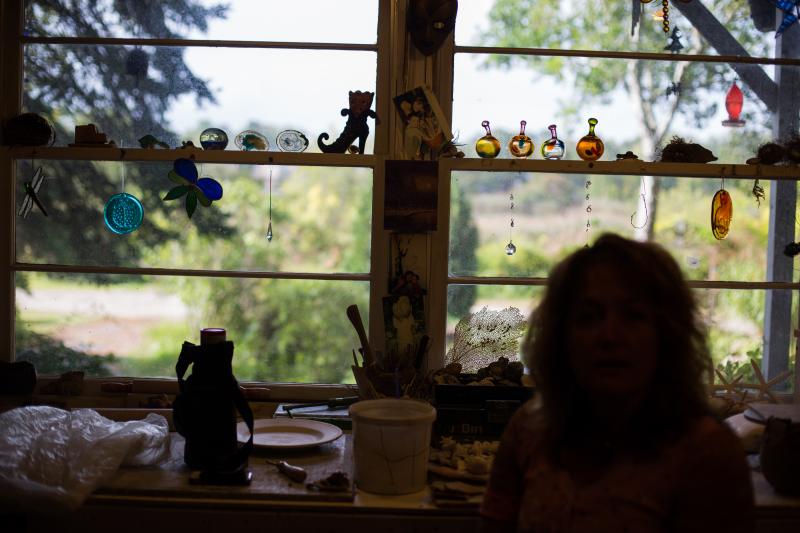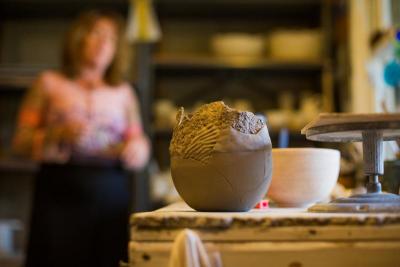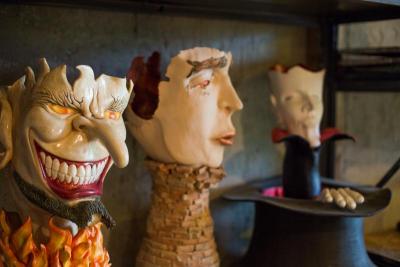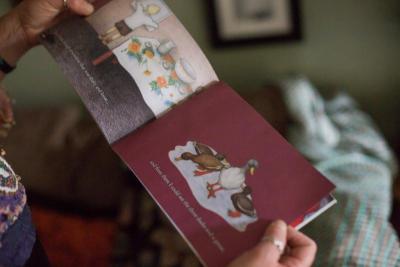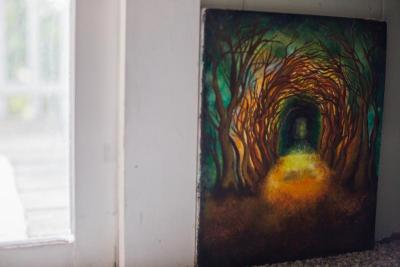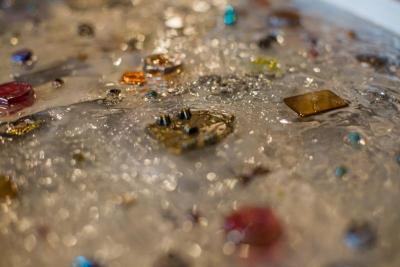Local artist finds inspiration in students, nature
Kendra D’angora wears the sunset around her neck.
“Around Halloween, I do a project [with my students] that can be eerie and moody without the typical symbols,” D’angora said in a text. “I was in Laughing Moon in Plymouth, and saw the necklace. Since it was exactly like the project, I got it. … I was watching the sunset on my porch. With amazement, I realized the scene on the pendant was exactly the scene I was viewing from my porch. The exact silhouetted tree over the bright orange and red sunset.”
D’angora is a local artist. Though she primarily works with clay, D’angora consistently draws, finding inspiration in nature, and “the way things grow.” She recently illustrated her second children’s book, “Matilda”, about a donkey rescued by a young girl from a cruel master. D’angora said the most challenging part of illustrating the book was drawing the old man and the little girl.
“This was hard – keeping them consistently looking like them,” D’angora said in an earlier interview. “And then, with colored pencil, you don’t always get flesh tones, so I had to do a lot of blending. So, a lot of these illustrations took a really long time to do.”
The first book D’angora illustrated is called “Three Ducks and a Goose”, and follows an Irish boy through a day on his family’s farm. The tale is based on the real-life late Brendan Tonra, who authored the book and wrote the music for the book’s accompanying CD. One version of the book song is instrumental, while the other has words.
“They wanted children singing the song that had the words, so I had the children’s choir at my school, St. Margaret’s, sing it, so they are actually incorporated on a CD,” D’angora said. “I actually cried when that came out.”
D'angora lives all the way at the end of a dirt road, in a house that looks as though it popped straight out of a Hollywood film, with an eclectic mix of handmade glass art in the window, coupled with the small, spiraling front garden that looks like something from a faerie tale.
D’angora said she loves to create sculptures, but also creates pottery, because, she said, to make money in art, “you have to pursue function.”
“I’m pretty happy with things I can hold,” D’angora said. “When you’re holding something, you can feel the energy of something someone made. Pottery was just a way for me to express myself as sculptural … Although it doesn’t fly off the shelves, it does do pretty well.”
Because she is “logical” and “not willing to be that starving artist”, said she also teaches at St. Margaret’s School in Buzzards Bay, and gives small group art lessons to children in her studio at home. But the job isn’t just a money-maker for her. She said she truly enjoys working with the children, and even draws daily inspiration from them.
“When working with children – they have such an uninhibited way of looking at things,” D’angora said. “Their freedom of thought is just really inspirational, and, when I am teaching them, I am also re-learning myself, which is really a beautiful thing.”
D’angora started art as a child herself. Coming from a family of musicians, D’angora said she felt slightly like the odd one out. But this didn’t stop her from collecting organic materials, such as seashells and coral to create replicas of the items she saw in the quaint little seaside shops of her hometown of Plymouth.
“I tried musical instruments, and it just didn’t seem to be my thing,” D’angora said. “So, for a while, I was doing a lot of mixed media things on driftwood. And those things – you know when you shake a sand dollar, and they make that noise? They look like butterflies, when you take them out. I guess it was a form of escape, too, because kids are mean.”
Despite taking up drawing in her later school years, D’angora turned more to clay art in high school, after taking a dedicated pottery class, and seeing a clay artist in Dennis throw pieces on a wheel, during a trip with her mother.
“I was astounded,” D’angora said. “I watched him throw a whole percolator teapot with one lump of clay, and it was just incredible. And I thought to myself, ‘I want to know how to do that.’”
D’angora said working with clay is unlike any other medium, because it is so “temperamental.”
“It doesn’t like a lot of things,” D’angora said. “Not too much heat, and not enough heat can also be a problem. And I’ve had things blow up and crack, and break my heart.”



